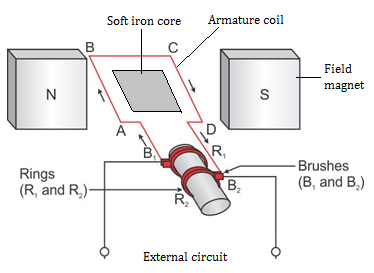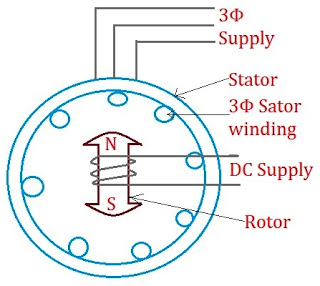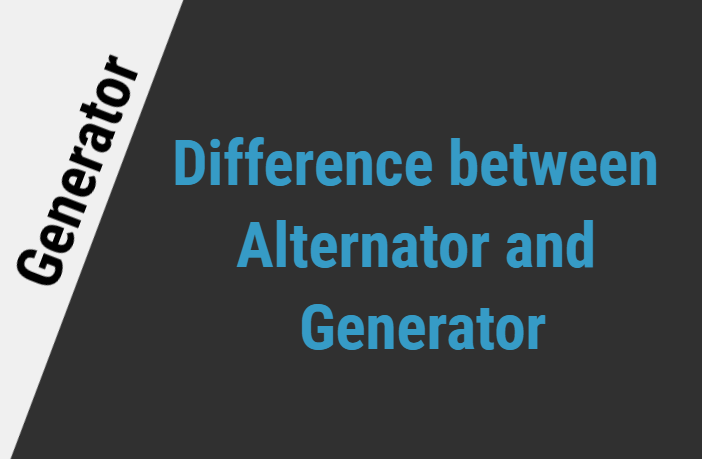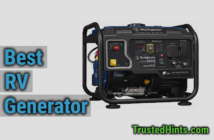As you know, all the cars are equipped with an alternator. And many people use generators as a backup system in their home during a power outage. So you might have a question about how the alternator and generator are different as they both produce electricity.
Before we understand their difference, first of all, we need to understand the construction of alternators and generators.
Basics of Generator and Alternator
I have published a detailed article on how portable works, so be sure to check it out for in-depth information. But I’ll explain it anyway.
According to faraday’s law of induction, whenever you place a conductor in a variable or changing magnetic field, EMF (electromotive force) will induce in it. And if the conductor circuit is closed, then the current will flow in the circuit.
Magnetism and electricity are related to each other, and with the help of one, you can generate the other one. Now you can produce electricity in two ways; by either rotating the conductor in a stationary magnetic field or by rotating the magnetic field around the static conductor.
Working of Generator


In the generator, the field winding of the stator is stationary, and the armature or rotor is the rotating part. In field-winding, either permanent magnets or electromagnets are used. With the help of external power, the field winding is energized; thus, the magnetic field is produced. Now this magnetic field is cut by coils of the rotor, which is always rotating. And hence, the AC power is produced, which is collected through the brush and slip ring.
Now, if you need DC power, then with the help of a commutator, you can convert the AC power to DC power. So this is how a generator works.
Read Also,
Working of Alternator


The alternator is also known as a synchronous generator. In an alternator, the armature is stationary, and the field system is rotating. The field winding is mounted on the rotor, and this winding is excited using the DC power, which creates a strong magnetic field. The rotor is rotated with the help of a prime mover, and when the field winding is excited, the rotating magnetic field is produced.
The armature winding is mounted on the stator, and when this rotating magnetic field cuts the conductor of the stator, voltage is induced in the winding, which is collected from the stator side.
Generally, three-phase alternators are used for bulk power generation, and because of its many advantages, the alternator is widely used in thermal, hydro, and nuclear power stations.
Read More: Inverter Generator vs. Conventional Generator: What is the difference? All you need to know
Difference between Alternator and Generator
Any alternator or generator has windings in the rotor as well as stator. Now one of these windings is energized using the external power; hence, the magnetic field is produced.
This magnetic field is cut by the second winding; thus, the electricity is produced in it. In the case of a generator, the produced power is DC, so the generated power is passed through the commutator to get the AC power, and in the case of an alternator, the produced power is AC; hence, it is connected directly to the load.
Now in the alternator, the three-phase winding is installed on the rotor, which is excited by DC power, and the rotor is rotated by the prime mover. This strong magnetic field generated by DC power is then cut by the stator conductor, and AC power is generated.
In a generator, stator winding is either permanent magnets or electromagnets, which generates a strong magnetic field because of DC power. Now, this magnetic field is cut by the conductors of the rotor, and hence the voltage is induced in the rotor, which is collected through the carbon brushes.
Read More: Top 7 Best Dual Fuel Generator Reviews
Advantages of Alternator Vs Generator
The biggest disadvantage of a generator is that it requires frequent maintenance due to its internal carbon brushes and slip rings. Moreover, when converting DC power to AC, significant power loss occurs.
The alternator, on the other hand, does not require carbon brushes, and it produces direct AC power, so there is no need for power conversion.
That’s not all; the generator cannot run at higher speeds because, at high RPM, the centrifugal forces will tear apart its rotor. The alternator uses the cylindrical pole arrangement, which can handle high-speed rotation without any problem.
Conclusion
The alternator is superior to the generator in every way, but it is used only where a bulk power generator is required, and all the alternators use the three-phase winding. The generator is used mostly in household and recreational applications, where the power requirement is not that high. In all of the generators, inverter generators are most quiet and fuel-efficient than any other generators on the market, including portable generator and dual-fuel generator.




